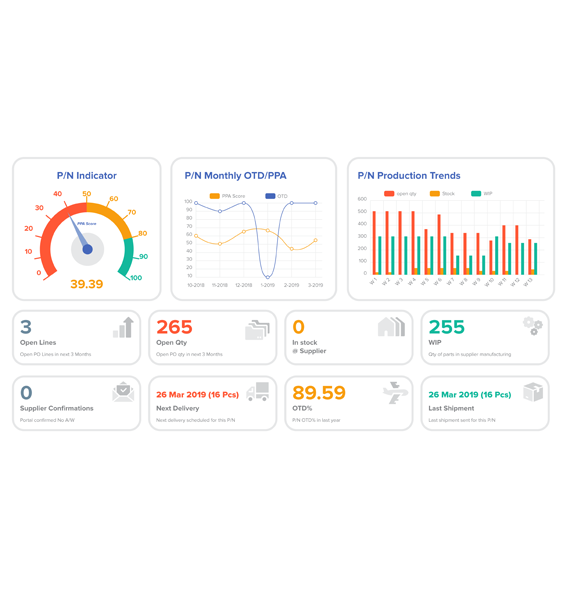Blogs
- Home
- »
- Blogs
Data-Driven Supplier Collaboration: Leveraging Analytics for Better Risk Management
15 March 2024
Machine learning and big data is one of the most commonly discussed topics today, and many supply chain and procurement departments are attentively monitoring the evolution of this trend.
Traditionally, purchasing and supply management teams have strongly relied on supplier data management, as procurement managers need to dispose of, clean, and update data of different natures to collaborate efficiently with suppliers, and 20% to 50% of working time in procurement is related to searching for information Accordingly.

Data-driven analytics have obvious applications and represent a new era in the supplier information management field as they link and aggregate all relevant information, thereby facilitating and speeding up strategic and operational procurement activities significantly, and are a critical source of meaningful information that can help supply chain stakeholders to gain improved insights and gain a competitive advantage and maximizing speed and visibility, improving supply chain relationships, and enhancing supply chain agility and collaboration.
Big data analytics can play an instrumental role in improving supplier relationship management and collaboration. It can resolve several pain points at strategic, operational, and tactical levels.
Machine learning and big data analytics can also facilitate better risk management in supplier collaboration. By analyzing various data sources, including suppliers manufacturing data, historical PO’s data from the ERP system, news articles, Data-Driven machine learning algorithms can detect potential risks associated with suppliers, such as potential manufacturing, late deliveries issues and consistent low on time deliveries rates. This early identification of risks allows organizations to take necessary actions to collaborate with suppliers to mitigate risks, minimizing any negative impact on their operations.
Poor on-time delivery (OTD) performance from suppliers impacts more than customers. It’s also an indicator of poor production efficiency and materials handling procedures. Consistent OTD problems can negatively affect many other areas of a company’s supply chain. Imagine the impact of a material shortage on the production process, the delayed schedules, and the extra labor costs for waiting. Not to mention costs of amending production lines, extra shipping, and addressing a flood of customer complaints.
While most supply chain organizations strive for 99% OTD from suppliers, most will be around 80-85% at best. The use of data driven and advanced prediction algorithms to foresee your supplier's on-time parts delivery problems and not after they shut your lines down has a great positive impact on OTD performance and risk management in supplier collaboration.
In order to ensure the On-Time Delivery of critical parts and mitigate risks, manufacturers and assembly houses need accurate predictions of potential problems.
The IDAS Platform uses a prediction algorithm to foresee delivery issues and provide warnings before any damage is caused. This capability enables a company to become proactive rather than reactive, and to improve its selection of suppliers, management of supplier relationships, and ordering processes – and eliminate line stoppages by achieving higher rates of On-Time Delivery and better supplier – buyer collaboration.
- The IDAS PPA is based on a Big Data Analysis of 4 types of supplier data:
- 1. Historical, 12-month inbound shipment data from the ERP system
- 2. Manufacturing data from the Portal, including finished goods & Work in Process
- 3. Supplier PO current confirmations from the Portal
- 4. Supplier Portal updating trends
- Following the Big Data analysis, the algorithm provides a Scoring System that is adjusted on both a supplier and a part level. The scores are grouped according to the urgency of action needed:
- Red – <65, late or will be late in the next 90 days; needs immediate attention
- Yellow – >65 – <85, might be late in the next 90 days
- Green – >85, will be on time in the next 90 days
The IDAS Parts Prediction Algorithm enables your Supply Chain team to focus its attention on potentially late deliveries, and to prioritize the actions required to prevent these delays before they occur. IDAS removes the burden of manual analysis of vast amounts of data – and makes endless phone calls and emails to suppliers a thing of the past.